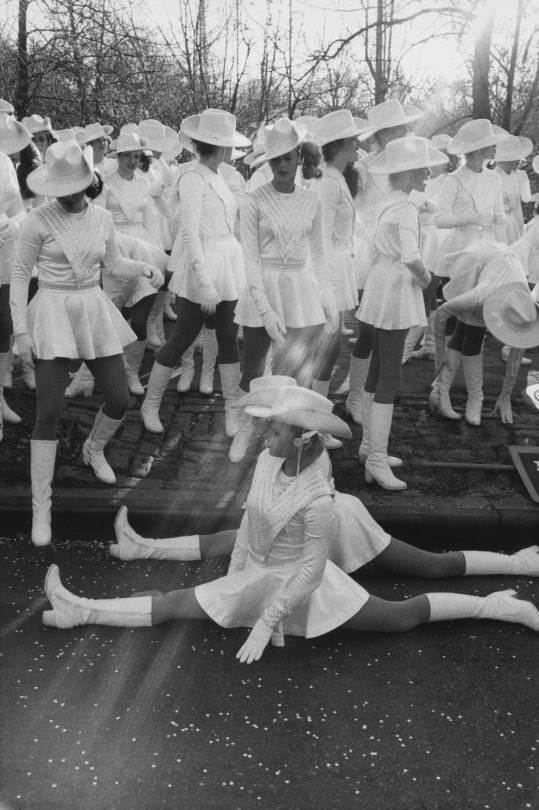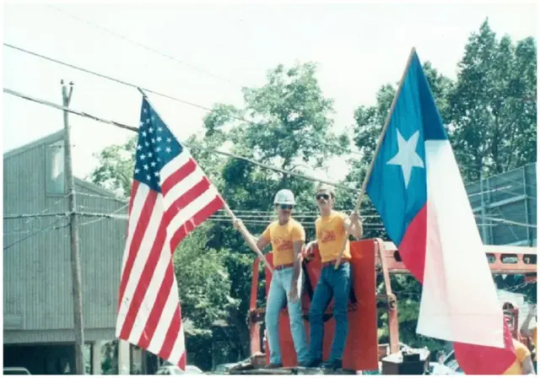#march 1980
Explore tagged Tumblr posts
Text
Depeche Mode - Enjoy The Silence
#Depeche Mode#Violator#Enjoy The Silence#Format:#CD#Album#Country:#US#Released:#Mar 20#1990#Genre:#Electronic#Style:#Synth-pop#English electronic music band formed March 1980 in Basildon#Essex#UK
875 notes
·
View notes
Text


Cleo Murray of The March Violets
#the march violets#Cleo Murray#Lovecraft#North#The March Violets#march violets#gothic#goth rock#trad goth#gothrock#goth#80s#80s music#80's#1980s#80s nostalgia#80s rock#80#New Wave#Goth Rock#music#leeds#Merciful Release#drum machine#80s aesthetic#80's nostalgia#80's goth#80s goth#80s girls#eighties
205 notes
·
View notes
Text

Pride March in New York City, sometime in the late 1980s | Courtesy of Leather Archives
#op#photography#pride#marches and protests#leather#leather archives#nyc#leather dyke#1980s#exact date unknown#lgbtqueue
1K notes
·
View notes
Photo

Teachers with Pride Still Have to Hide
Gay schoolteachers wearing masks at parade, June 28, 1986
In this image, Seattle schoolteachers participating in the Gay Freedom Day parade through the Capitol Hill neighborhood hold a banner reading "Teachers with Pride Still Have to Hide," and wear masks to protest the discrimination they have felt. An estimated 10,000 people participated in the event, which is part of Seattle's annual Gay Pride Week.
[ 📷 Jennifer Werner-Jones / Seattle Post-Intelligencer ]
oh, how times have changed!
#queer history#teachers#teacher#pride month#🌈#🏳️🌈#🦄#🏳️⚧️#1980s#80s#1986#queer#school#florida#book ban#book bans#librarians#librarian#anti trans legislation#anti woke legislation#pride march#lgbt#lgbtq#lgbqti#discrimination#demonstration#protest#seattle#capitol hill#cap hill
1K notes
·
View notes
Note
YOU'RE ALIVE??? - my reaction upon seeing your most recent reblog
Anyway, your fic and blog single-handedly kickstarted my U.S. military history obsession <3
im alive!!!! yeah I've been away for a while. it, ah... has not been a grrrreat time to be a military historian or a Big Fan of military propaganda pieces like Top Gun for the last year or so...
lmfao I just saw that the second trump admin plans to haul up all the commanders in charge of the Afghanistan withdrawal (which HE negotiated btw) in front of congress with the plan to charge them all with TREASON per the UCMJ (good fucking luck dude)
but um in my timeline... that includes navy secretary 2021-2022 tom iceman kazansky, bro... so in case you're wondering what these characters are up to in the present day apparently the answer is "getting investigated for treason." sorry to bring down the mood. my happy ending's a little sour now.
mostly I've been insanely busy. I graduate university in may & have to have a journalism capstone, an English research thesis (my paper on military commanding officers in fiction inspired by my top gun fics tbh) and a creative writing capstone (novel) done by march. plus job applications, work for the place where im currently freelancing, apartment hunting... so im a wee bit crunched lately.
some minor updates for anyone who still cares: I am, extremely slowly, still editing WWGATTAI & the other stories. I've finished a complete overhaul of the Carole-dies chapter, chapter 7, but have yet to post it because I'd like to sync a logistical change in the story across the other pieces. and I'm mostly done with a COMPLETE overhaul of chapter 6 (aka "the nineties" chapter where ice & mav move in together & build their family) which goes into much more detail about how... emotionally and logistically... they could pull that off. + a lot more baseball stuff + the Clinton sex scandal. which leaves just chapter 10 left to do. ugh, my least favorite, which is why im putting it off... and then debriefing etc. which won't take as long because I don't honestly care about debriefing at all and I just have very minor changes to make to it. slider doesn't need editing and idgaf about the other pieces.
once I finish with the edits, which will happen eventually I swear because more than anything I just want to hold the updated edited final thing in my hands the way I did with the first draft, I'll upload my pdf (with meta analysis and notes that go back to mid-2022) for u guys to do with as you wish
also for the m:i doubleheaders I am planning on editing my m:i fic pre-m:i8 next year and pending ilsa life status will write much much more
#have I missed anything big in the fandom orrrr...#also I am on bsky at compacflt (tho I don't post about top gun)#if u wanna come say hi & see what im up to (politics and aerospacepoasting mainly)#'but Lia!' I hear you complain wrt this post. 'you promised all this before! you promised a final edit like literally over a year ago!'#yeah im continually asking for patience here lol#a lots going on in the world in case you weren't aware#trying to be cool and normal about this new administration purging the military of 'woke' and 'disloyalists'#but it is really a five alarm fire along with every other fucking thing this clown and his clown posse want to bring to the country I love#thinking of bringing back my boring march 2023 new-yorker-style tom kazansky interview to talk about some of this stuff in a fandom space#regardless of how you feel about 1980s Reagan neocon politics or 2010s neoliberal politics...#what we're about to see in the near foreign policy/defense policy future is a repudiation of both schools of thought for the WORSE#sorry let me go back to being cool and normal#and not posting on here#miss you guys
40 notes
·
View notes
Text

#castle#castlecore#castle aesthetic#Stokesay#Castle#water#tree#pond#1982#1980's#13-3-82#March#Welsh#Marches#Shropshire#Craven#Arms#viewpoint#scenic#scenery#view#countryside#landscape#winter#historical#history#lake#tower#Ludlow#timbers
9 notes
·
View notes
Text

Wapping, London, 1987 (SINNER)
New scan. I've posted this image before, but I'm currently rescanning older images, and this one always has had meaning for me. The girls that appear here are now in their early 50's, and the little lad is somewhere in his 40's.
#london#1980's#graffiti#bus stop#children#lensblr#imiging#luxlit#isu#photographers on tumblr#original photographers#the photographers society#street photography#kids#families#minolta xd-11#35mm film#time marches on
7 notes
·
View notes
Text

WALTER ROHRL, 1982
#going through my drafts from like march. hello.#last one though#walter röhrl#1980s#wrc#motorsport#world rally championship
8 notes
·
View notes
Text
January Carpet! (*^◯^*)

#80s aesthetic#arcade carpet#carpets#80s#1980s#silly little guy#january#why does January this year feel like March
28 notes
·
View notes
Text
Depeche Mode - Personal Jesus
#Depeche Mode#Violator#Personal Jesus#Format:#CD#Album#Country:#US#Released:#Mar 20#1990#Genre:#Electronic#Style:#Synth-pop#English electronic music band formed March 1980 in Basildon#Essex#UK
505 notes
·
View notes
Text

Cleo Murray of The March Violets
#the march violets#Cleo Murray#Lovecraft#North#The March Violets#march violets#gothic#goth rock#trad goth#gothrock#goth#80s#80s music#80's#1980s#80s nostalgia#80s rock#80#New Wave#Goth Rock#music#leeds#Merciful Release#drum machine#80s aesthetic#80's nostalgia#80's goth#80s goth#80s girls#eighties
14 notes
·
View notes
Text


Majorettes preparing to march in the Macy’s Thanksgiving Day Parade, 1982. Photographed by Jill Freedman.
107 notes
·
View notes
Text
Saving Houston’s LGBTQ history through thousands of hours of radio archives

1984 Houston Pride Parade 📷 JD Doyle
For years, hundreds of fragile cassette tapes sat quietly aging in a storage locker in Houston, Texas. Each plastic case contained hours of radio shows, made for and by LGBTQ people. The first shows aired in the mid-1970s. They continued, off and on, for more than 30 years -- a period that included the AIDS crisis, the women’s liberation movement and the rise of LGBT civil rights. A pair of archivists, Emily Vinson and Bethany Scott, have been working on preserving the programs, thousands of hours of them, online. … The shows aired on KPFT (90.1), Houston’s Pacifica station. One of them, Wilde ‘n’ Stein (named for Oscar Wilde and Gertrude Stein) started in 1975 and ran through the early 1990s. A late night show, After Hours, ran from 1987 until the early 2000s. … Over the years, the producers and hosts of these radio shows brought their listeners live street coverage of Pride parades, music that celebrated LGBTQ experiences and interviews with city council members, activists, local arts luminaries, and public health officials. Because it was on the radio, often late at night, closeted people could listen quietly and discreetly, without the fear of discovery that printed material might bring. Carl Han, a young Vietnamese-American, listened to the station’s LGBT programming at the lowest possible volume, as he told the radio show After Hours in 1992. “That’s how I discovered the Montrose [LGBT] community,” he said. “At the age of 15, I hit upon KPFT one night and turned it down real low so no one can hear.” He would go on to be a leading local activist, who at the time of the broadcast was the secretary of Asians and Friends, a community group serving Houston’s LGBTQ Asian Americans. Such content came as a revelation to 20-year-old Andrea Hoang. As an undergraduate at the University of Houston, one of her campus jobs was to help digitize and transcribe the shows. Hoang, who identifies as queer, was thrilled to discover the voices of Asian-American activists, including Han and After Hours host Vivian Lee, in broadcasts from before she was born. “They had so many people of color coming onto this show and spearheading these local movements,” she marvels, adding that she also loved learning about the vibrant LGBT music played on the programs so much, she made this Spotify playlist honoring it. The digitization of this audio history, says Vinson, would not be possible without three Houstonians who safeguarded the cassettes for so many years. Judy Reeves co-founded the Gulf Coast Archive and Museum of Gay, Lesbian, Bisexual, and Transgender History. JD Doyle maintains an extensive website documenting local LGBT history. Jimmy Carper was a longtime host and producer of After Hours. …
Neda Ulaby | NPR | June 4, 2024
More On NPR >
Listen to Andrea Hoang's archive-inspired Spotify Playlist
#wilde n stein#kpft#after hours#radio station#queer#queer history#asians and friends#lgbqti#lgbt#trans#pride month#pride march#protest#houston#texas#university of houston#aids crisis#1984#1980s#80s#70s#1992#90s#00s#1970s#1977
26 notes
·
View notes







